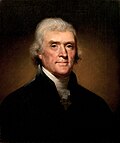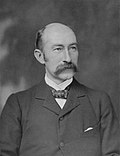Separation of church and state
Separation of church and state is a phrase coined by Thomas Jefferson that refers to keeping government affairs separate from religious affairs. Most states in the world today are secular states have this separation, but some states (those that are theocracies or that have state religions) do not.
By country
United States
The phrase "separation of church and state" was coined by Thomas Jefferson, a Founding Father served as President of the United States from 1801–1809. While the phrase itself is not used, a clause preventing state religion exists in the First Amendment to the United States Constitution:
Congress shall make no law respecting an establishment of religion, or prohibiting the free exercise thereof; or abridging the freedom of speech, or of the press; or the right of the people peaceably to assemble, and to petition the Government for a redress of grievances.
Other page
Separation Of Church And State Media
St. Augustine by Carlo Crivelli
Antichristus, a woodcut by Lucas Cranach the Elder of the pope using the temporal power to grant authority to a generously contributing ruler
John Locke, English political philosopher, argued for individual conscience, free from state control.
Thomas Jefferson, the third President of the United States, whose letter to the Danbury Baptists Association is often quoted in debates regarding the separation of church and state
H. B. Higgins, proponent of Section 116 in the Australian pre-Federation constitutional conventions
Rui Barbosa had a large influence upon the text adopted as the 1891 Constitution of Brazil.
"Constitution no. 1", which is kept in the great hall of the Palace of the Constitutional Court and is used on the occasion of the presidential inauguration








